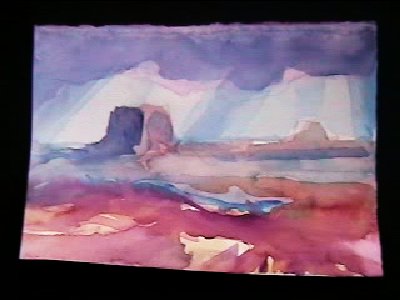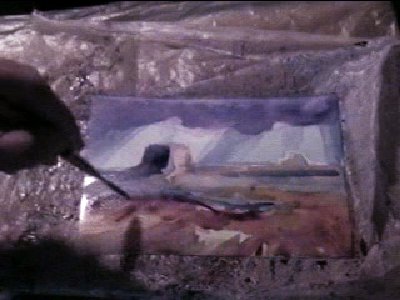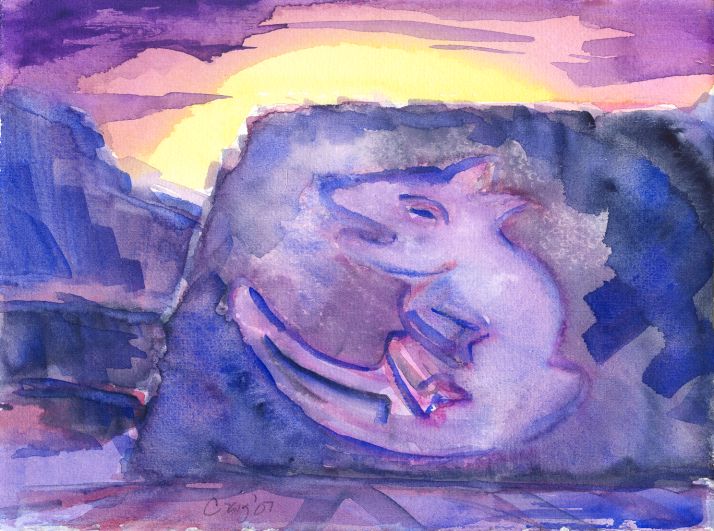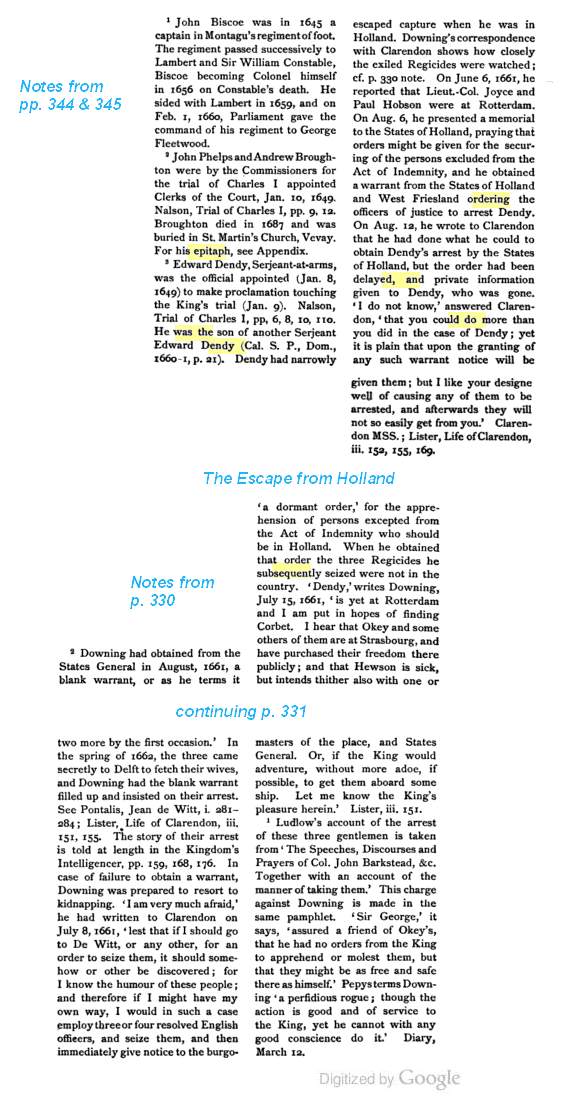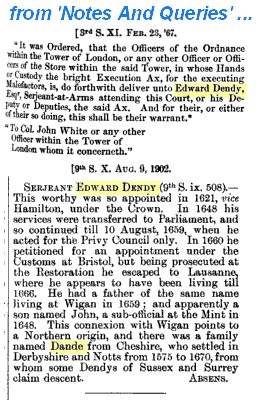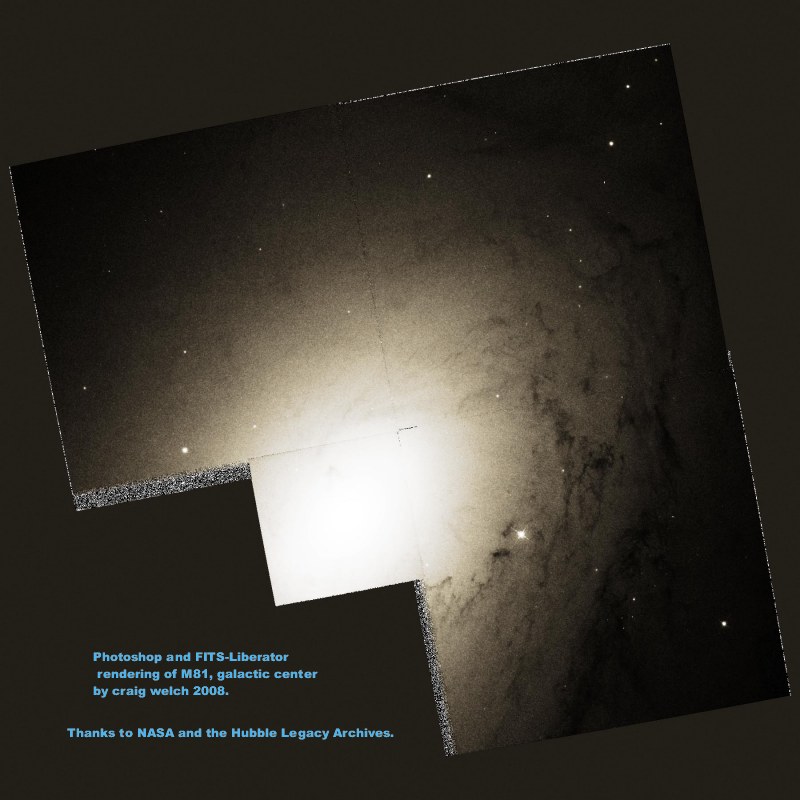*** End 13th and Beginning 14th Century ***
Record Summary
Scope and content William Dendy of Swallowfield (Swafeld) to Maud late the wife of Robert de Swafeld, clerk, brother and heir of the grantor: Quitclaim of land, etc., in Banbury Wykham (in Bodicote) and Overthorpe (Cothrop): Oxford. (N'hamp.) Berks.
Covering dates 12 Edw. II
Availability Open Document, Open Description, Normal Closure before FOI Act: 30 years
Held by The National Archives, Kew
FILE - [no title] - ref. BCM/G/4/6/5 - date: [1319]
Contents
Robert de Craunford and Maud his sister. 25 Aug. 13 Edw. II
Robert has granted to Maud widow of Robert de Swafeld, for her life, a rent of 20s. a year from his manor of Newenton Juwel, and is bound to her in £10, paid at her house in Banneburi, not to disturb her tenure.
Witnesses: Ralph de Preawes, Sir Walter de Burencestre, William de Orton, Thomas de Pakynton of Brailes, John the miller of Newington.
At: Banbury.
[Here I will insert a note regarding the ties of the Cranford family
to Scotland in the 13th century:
- Robert de Swafeld, the brother and heir of William Dendy of
Swallowfield (1319 deed to Maud, widow of Robert) is the
brother-in-law of Robert de Craunford (Cranford). Robert
de Craunford is the lord of the manor of Newington Jewel
and Robert de Swafeld serves as clerk and witiness on
several land aquisition documents (1309) for Robert de
Craunford. Now, regarding the relationship of the Cranfords
to Scotland, the family of Cranford served as clerks to
Roger, a son of the third earl of Leicester and the
bishop-elect of St. Andrews in 1189. See the quote in
the next paragraph from the Norman Shead's article in
The Scottish Historical Review of October 2007 ("Compassed
About with so Great a Cloud: The Witnesses of Scottish
Episcopal Acta Before ca 1250" Volume
LXXXVI, 2 No. 222: Oct 2007, 159-175).
(p.172) "The arrival of Roger, a son of the third earl
of Leicester, as bishop-elect of St. Andrews in 1189
not surprisingly introduced several men from England
into the diocese... Geoffrey Cranford and William de
Wiville came from the household of the earls of Leicester,
though the latter's surname suggests an origin in
Lincolnshire. Cranford witnessed charters of Earl
Robert IV, Bishop Roger's brother, and of countess
Petronilla. These men were perhaps the sons of Roger
de Cranfort and another William de Wiville of Earl
Robert II's time."
The close family relationship of Robert de Swafeld
(brother of William Dendy) and Robert de Craunford
provides the opportunity for a connection to Scotland
in the family history of Robert de Swafeld, given the
importance of the Cranfords in the households of the
earls of Leicester and in the diocese of St. Andrews
in the 13th century.
- "THE CRANFORD INHERITANCE BCM/G/4 [n.d.]
These documents are held at Berkeley Castle Muniments
Administrative history:
South Newington was the principal manor of the Cranford family in the 14th century. By 1206 the manor was held by William (I) de Paris, who c. 1212 granted an estate in South Newington to Ralph Ivaus (or Loas, Juas, Jueus, Ives, Sowas) in marriage with his daughter Helewise. Helewise's brother William (II) de Paris died without issue, and in 1255 his lands were divided between his surviving sister Maud de Wyke, and his nephew Ralph (II) Ivaus. Nicholas de Cranford, a canon of Wells, and his nephew Robert acquired a substantial proportion of the inheritance, in particular South Newington. In 1259 Ralph Ivaus and his wife Agnes granted the reversion of property in South Newington to Nicholas de Cranford, but Ralph also granted all his holdings there direct to Robert, in order to have Nicholas's good will: below, BCM/G/4/6/4 [GC 2523]. Ralph died without issue in 1272 when the heir to his portion of the Paris lands (of which he had sold part) was his aunt Maud de Wyke. Maud also sold some of her brother's lands to Nicholas de Cranford, specifically his lands in Dorset and a rent of 4s. in Blackford (Som.), but she retained the lands at 'Stokes' (Som.), Cassington (Oxon.) and in Buckinghamshire.
Robert de Cranford died in 1302 and was succeeded by his son and heir, Robert (II), who died in 1339 holding the manor of South Newington and leaving a widow Joan and a son Robert."
- Robert (II) de Cranford inherits in 1302 the manor of South Newington
(a.k.a. "Newenton Juwel") from his father Robert (I). In 1303 we discover
that Robert de Swafeld is living in Banbury by a writ of debt issued
against him:
- Record Summary
Scope and content Debtor: Philip de Swayfield {Swafelde}, staying in Nettleham [Lawress Wapentake], Lincs., and Robert de Swayfield, staying in Banbury, Oxon.
Creditor: John de Foderby {Fotterby}, the Elder [of Lincs]
Amount: £40.
Before whom: Stephen de Stanham, Mayor of Lincoln; Adam Fitz-Martin, Clerk.
First term: 12/03/1303
Last term: 06/04/1303
Writ to: Sheriff of Lincs. & Oxon
Sent by: Stephen de Stanham, Mayor of Lincoln; Adam Fitz-Martin, Clerk.
Covering dates 1303 Aug 5
Availability Open Document, Open Description, Open on Transfer
Held by The National Archives, Kew
- We can most likey conclude that Philip de Swayfield is some family
relation to Robert de Swayfield since a debt of 40 pounds in 1303
is the equivalent of several thousand pounds of today. Also, we
can safely assume that the debt for Robert was acquired in Lincoln
since the creditor is in Lincoln and the village of Nettleham is
only about 3 miles from Lincoln.
From the history provided by the Berkeley Castle, "William (II) de Paris
died without issue, and in 1255 his lands were divided between his
surviving sister Maud de Wyke, and his nephew Ralph (II) Ivaus...
Nicholas de Cranford, a canon of Wells, and his nephew Robert acquired
a substantial proportion of the inheritance, in particular South Newington.
In 1259 Ralph Ivaus and his wife Agnes granted the reversion of property
in South Newington to Nicholas de Cranford, but Ralph also granted all his
holdings there direct to Robert, in order to have Nicholas's good will.
Ralph died without issue in 1272 when the heir to his portion of the Paris
lands (of which he had sold part) was his aunt Maud de Wyke."
A note on the geography of Banbury-Wykham: according to the Berkeley Castle
administrative history "Wyke Farm lay by the south
gate of Oxford, but evidently west of the River Thames, as it was
in Berkshire."
The lands of Newington Jewel were in the possession of William (II) de Paris
prior to 1255. We only learn of the Cranfords in the Berkeley Castle
documents in 1259 when Nicholas de Cranford, a canon of Wells (diocese)
acquires "a substantial proportion of the inheritance." However, from
the article in The Scottish Historical Review, we learn about the family
of Cranford much earlier: in the 12th century they are members of the
household of the earls of Leicaster and figuring prominently in the
household of Roger, a son of the 3rd earl of Leicaster and bishop-elect of
the diocese of St. Andrews in Scotland.
- Robert de Swafeld and his brother William Dendy of Swafeld: property,
inheritance, and family ties to Cranfords.
"William Dendy of Swallowfield (Swafeld) to Maud late
the wife of Robert de Swafeld, clerk, brother and heir of the grantor:
Quitclaim of land, etc., in Banbury Wykham..."
The date of this grant of land to Maud, the widow of Robert de Swafeld
is 1319, (12 Edward II). We now know that land in Banbury Wykham falls
into two neighboring counites: Oxfordshire and Berkshire. We also have
discovered from the Berkeley Castle documents that Maud, the wife of
Robert de Swafeld is the sister of Robert (II) de Cranford.
There are two facts relating to the persons of Robert de Swafeld
and William Dendy, his brother. Firstly, Robert de Swafeld,
although having a writ of debt for a substantial amount in 1303,
has good standing with the Cranfords such as to marry Maud, the
sister of Robert de Cranford. The second fact is that in 1303
Robert de Swafeld is already living in Banbury after recently
acquiring a debt with Philip in Lincoln; and, upon his death in
1319 William Dendy, Robert de Swafeld's brother, owns the Banbury
land where Robert de Swafeld and wife Maud have been living.
Who is William and how is it that he owns the land that he
gives to Maud by quitclaim? Why is there such a strong family
bond between Robert de Swafeld and the powerful family
of Cranfords? It is not property nor is it material wealth.
It might be Scotland. There is among South Carolina Dendys
the long held family tradition that the Dendys originated
in Scotland. The Dendys are clearly English at the time of
the South Carolina colony but the origin of the family may
have its beginning in 13th century Scotland and a family
alliance with the powerful ecclesiastical family of 13th
century clerks and canons of St. Andrews in Scotland and
Wells in England.]
Image details
Description Petitioners: Cecily le Conestable (Constable), wife of Roger le Costable of North Walsham.
Name(s): Conestable (Constable), Cecily
Addressees: King and council
Nature of request: Conestable complains of William Green and others that they came by force and arms to North Walsham at Monday next before the feast of the Ascension in the eight year of the king's reign, and assaulted and wounded her husband, killed his brother and maimed Hugh le Constable and they are unable to have a remedy. She requests grace and remedy be granted to her at Yarmouth the Monday next after the feast of St Scholastica.
Nature of endorsement: [None]
Places mentioned: North Walsham, Norfolk; Gernemut (Great Yarmouth), [Norfolk]
People mentioned: William Grene (Green); Ellis Grene (Green); Geoffrey Grene (Green); Thomas Littester; John Neweman (Newman) the younger; William [Eylesun], son of Richard Eylesun; Robert Seyne; John Noreys (Norris); Clement Dende; William Dende; Robert de Sperham; John [Agathe], son of Roger Agathe; Clement Manger; John Baldeman; Roger le Conestable (Constable), husband of the petitioner; Richard le Conestable (Constable), brother of Roger le Constable; Hugh le Conestable (Constable).
Date derivation: The petition refers to the assault occurring on Monday 28 April 1315. The petition must date to soon after this.
Date 1315
Catalogue reference SC 8/40/1978
Dept Records of various departments, arranged artificially according to type, and formerly entitled Special Collections
Series Special Collections: Ancient Petitions
Piece 1951-2000. Individual petitions are described and dated at Item level.
Image contains 1 item for the catalogue reference
See a transcription of the Norman French content of the Cecily le Conestable petition.
Calendar of letter-books of the city of London: G
Reginald R. Sharpe (editor), 1905
Pages 238-248
Citation: 'Folios ccxxi - ccxxx: Feb 1368-9
Folio ccxxiv.
Ordinacio wyndrawer'.
16 April, 43 Edward III. [A.D. 1369], the following winedrawers (wyndrawerii) came before
Simon de Mordone, the Mayor, William Haldene, the Recorder, Adam Fraunceys, John Wrothe,
John Stodeye, Stephen Cavendisshe, William Welde, Bartholomew Frestlynge, Richard
Croydone, John Chichestre, John Bernes, John Tornegold, James Andreu, and William
Walworth, Aldermen, viz., John Bright, master, John William, "wyndrawere," Gilbert
Dantre, Hubert Chelsham, Benedict Dreu, William Philpot, Robert de Ynde, Robert Pursere,
William Holm, John "Maisterion" Lightfot, and John Salkyn, his fellows; also John
Croydone, master, and John Cook, Nicholas Netlam, Henry Mustone, John Bysshopesgate, and
Ralph Hulle, his fellows; also John Feversham, master, and Roger Straunge, John de
Prestone, John Ferour, Robert de Bisshopesgate, Thomas de Chestre, John Langele, John
Elys, John Westm[inster ?], William Og, and Stephen de Dende, his fellows; and they were
sworn to faithfully serve the commons and not to take more than the fees prescribed. (fn.
10) Further, they were forbidden to handle any wine-cask unless twelve associates were
present.
The surname of Dendy evolved in the 2nd half of the 13th century and
the beginning of the 14th near the coast of the east midlands of England in
Lincolnshire and the North Norfolk District, in the
wool trade towns of Swafield and Walsham. Dendy derived from a place name as we
see in 1369 in Stephen de Dende and resembles the first Provost of Dundee
in 1286, Radulfo, Magister de Dundee. In the 1298 City Charter of Dundee granted
by Sir William Wallace (Walays) the Latin text spells the city name Dunde. In
the petition of Cecily le Conestable in 1315 we encounter Clement Dende and William
Dende. In William's 1318 grant of land in Banbury to his brother's widow,
the name takes the form it will keep through the 16th century and on to the
present time as Dendy.
In regard to the spelling of the city name Dunde in early
14th century petitions and manuscripts, the name has variants from
scribe to scribe on a phonetic basis of spelling. This makes an exact
derivation of a name from the city difficult. The city name of Dundee
is Scottish Gaelic in origin and its rendering in Norman French is
only approximate when spelled by phonetics. In the image below are
freehand renderings from three different petitions naming Dundee
and Perth (Town of St. John of Perth). The names of the petitioner
and the date of the petition are shown along with the literal transcription
for the word for Dundee City. In a 1406 petition from Scotland to the
Bishop of Durham, the spelling is as the modern form: Dundee.
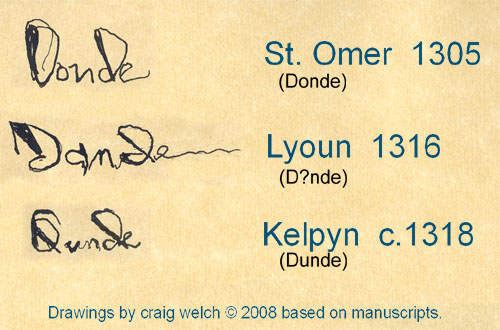
It is worth noting that the appearance of the surname Dende in the
area of the east coastal wool town of North Walsham in 1315 corresponds
in time to the recapture of the royal castle of Roxburgh (Rokesburg)
by the Scots in 1313 in their fight for independence. As an indication of the complete disruption of life on land and sea during the conflict between Scotland and England from the invasion of Berwick in 1296 through the entire period of Edward II, a petition of 1307 from Galloway, describes poignantly the destruction by Robert de Bruce of lands near to and on both sides of the border to prevent an invading English force from obtaining food and resources:
SC 8/48/2387 "The petitioner [John de Geueleston of Galloway] seeks expenses for his service to the king's father in his campaign in Galloway and compensation for the destruction of his lands and property by Bruce, and that the king's enemies should be driven from his country. The petitioner incurred costs of £100 and more in the service of the king's father in Galloway, which costs were intended to be paid by the lord of Perth now dead. Bruce has invaded his lands and burned and destroyed his goods worth more than £300, and now since the departure of the king his lands are in close proximity to the parts of Scotland and Bruce has burned and destroyed his corn and his house worth more than £100."
The borough of Kings Lynn (very near the town of North Walsham): "Letters Patent of Exemplication of Letters Patent, dated at Westminster by Henry IV. on the 25th of November in the 14th year of his reign" (i.e. 1413)
the following entry is recorded in manuscripts of King's Lynn:
". . . We the Mayor and Potentiores for our part and We the Mediocres and the Inferiores not burgesses for our part and the whole community of the town of Lenn ...
on the part of the Potentiores, Edmund Belleyetere, Thomas Waterden, John Wintworth, Thomas Brygge, Robert Brunham, John Brandon, Ralph Bedyngham, William Hounderpound, James Brygge, Richard Thorp, Richard Dendy, John Wesenham, Bartholomew Systerne, Andrew Swanton, John Bolt, John Spicer, John Home, John Lakynghithe, Robert Salesbury, William Briccham, John Thoresby and Thomas Hunt have each been bound by themselves by their obligatory writing in the sum of one hundred pounds to the Mayor and community of Lenn aforesaid and their successors,
...Sealed with the common seal of the town of Lenn, and dated 15 Dec., 13 Henry IV." Dendys are clearly well established and prosperous in the
location of King's Lynn which is south of Boston and Stamford and near the east midlands coast of the North Sea.
As a postscript to Dendys in Lynn, 282 years later, Thomas Dendy in 1695 purchased property from ancient lands
connected to Castle Rising, near the town of Lynn. This has in part the appearance of a commercial venture since Thomas
immediately sells in 1695 and leases to sell in 1696 two of the three parcels of property; he retains the third parcel
until its sale in 1708:
Norfolk Record Office
Howard of Castle Rising Collection
Deeds How 66 - 68 340 x 4 1695 - 1721
Contents:
Deeds of burgage or burgages, with barns, stables, orchards &c., sold by Augustine Bulwere to Thomas Dendy in 1695 and leased for term of 21 years by Dendy to Thomas Howard Esq. in 1696. In 1708 one burgage was sold by Dendy to Stephen Allen gent. who leased for term of 31 years to the Hon. William and Lady Diana Fielding. In 1721 Stephen son of Stephen Allen sold to Charles Brockwell. Inc. declarations of trust in favour of the Fieldings, 1708, 1721, and unexecuted lease to them from Brockwell, 1721.
The residue, a piece of arable ground, site of an ancient burgage, was sold by Dendy to Stephen Sheppard in 1695 and leased for term of 31 years by Sheppard to Thomas Howard Esq. in 1696. In 1721 it was conveyed by the Hon. William Fielding to John Skynner gent. and then leased for term of 99 years by Skynner to the Fieldings. Inc. declaration of trust in favour of the Fieldings, 1721
*** The End of an Era by Mid 14th Century ***
Instrument CCA-DCc-ChAnt/O/129 13 Apr 1363
1 document
Parchment, 1m, seal, dirty, stained
Related information: Notarial exemplification: CCA-DCc-ChAnt/O/130A Registered version: CCA-DCc-Register/B, ff366r-366v
Contents:
From: Simon Islip, archbishop of Canterbury The archbishop, with the consent and licence of King Edward III, has built and founded a hall of scholars in the university of Oxford in a place which he has provided at his own cost, which he has caused to be ordained for 12 scholars. As part of its maintenance, he grants the college 8 houses, which he acquired specially at great cost to himself, near the place he has assigned for the scholars to live. He has also arranged for the manor of Woodford [Northamptonshire] in Lincoln diocese, belonging to his nephew William de Islep', to be assigned to the college. The archbishop has founded the college because many men learned and skillled in all knowledge have been lost in past plagues and at present very few insist on the study of letters because of lack of maintenance ('defectum exhibicionis'). Given at Mayfield [Sussex]. Endorsed with description, as 'Tenor fundacionis' of the college, in 15th cent hand.
|
